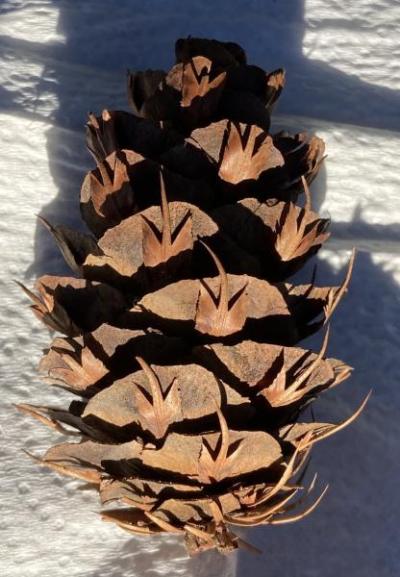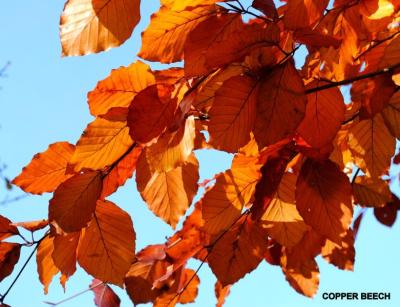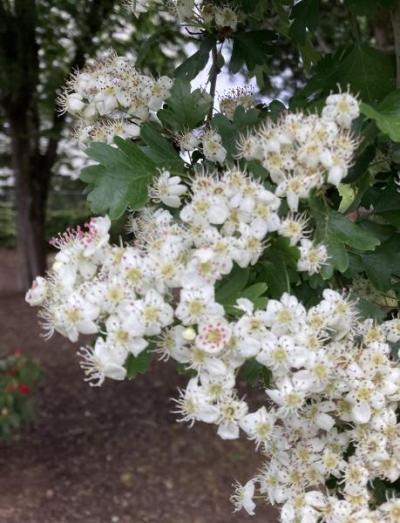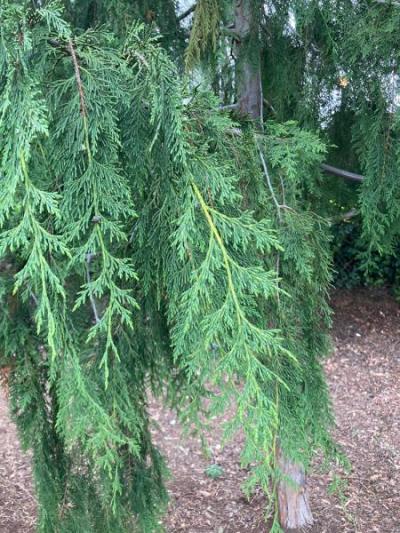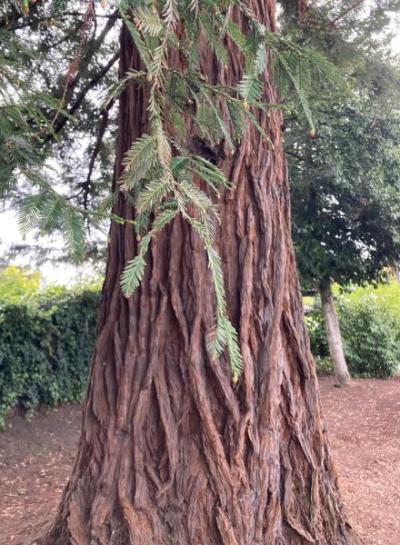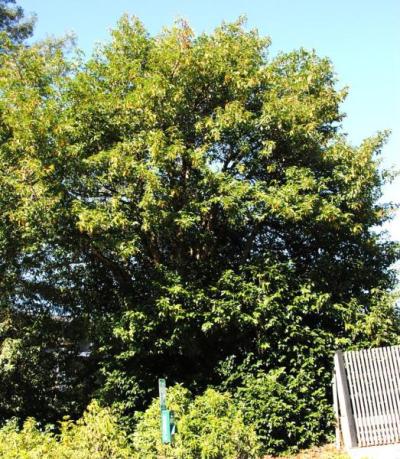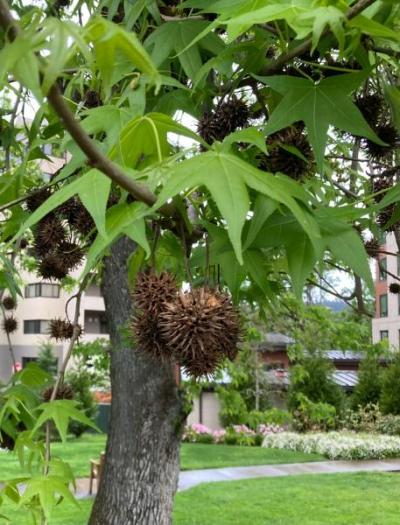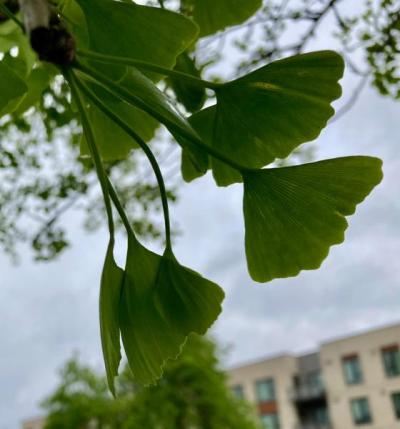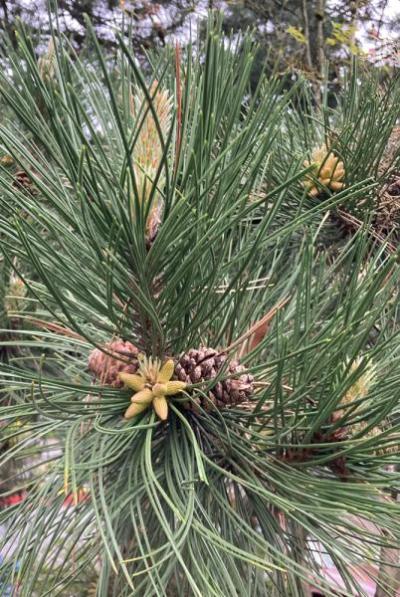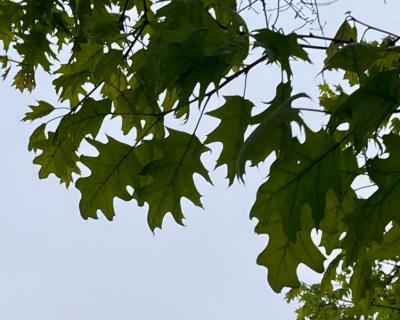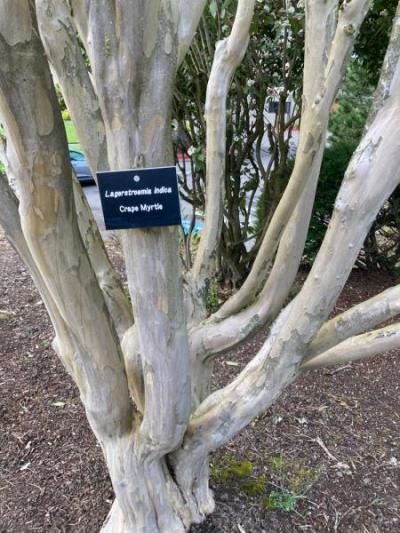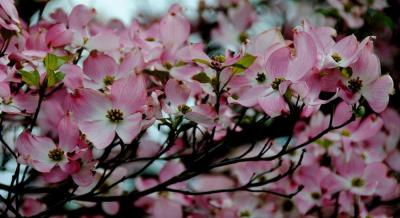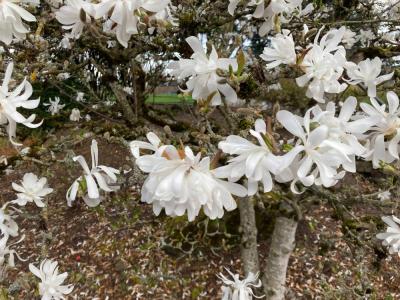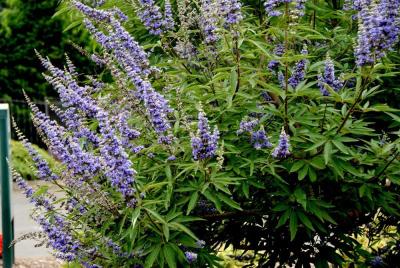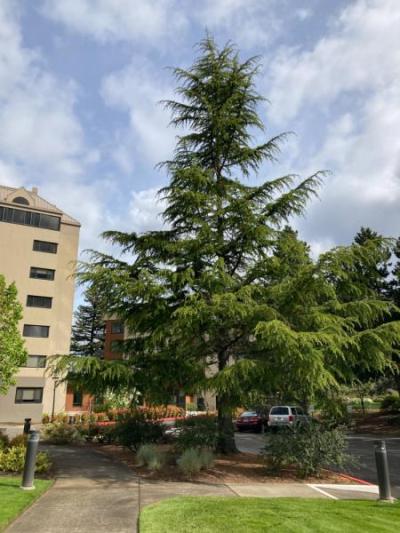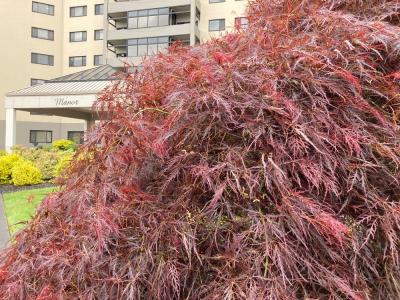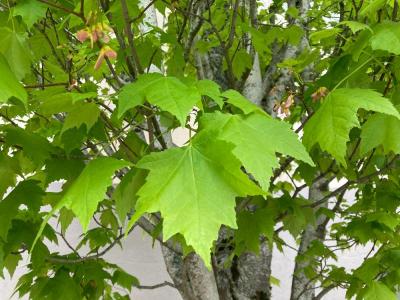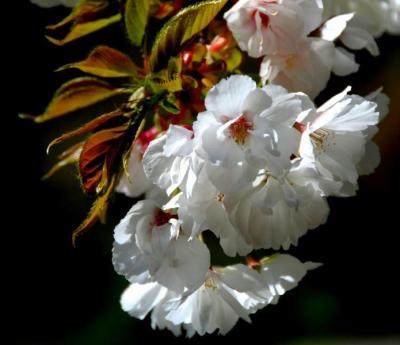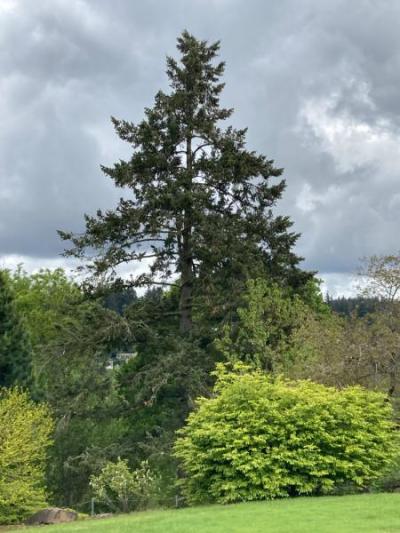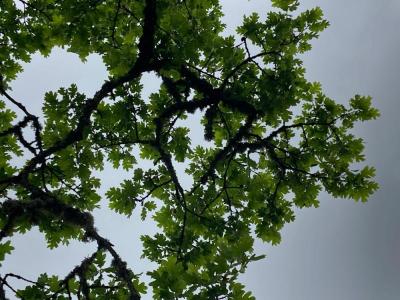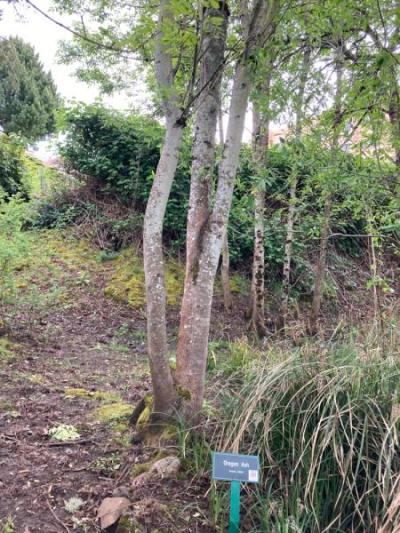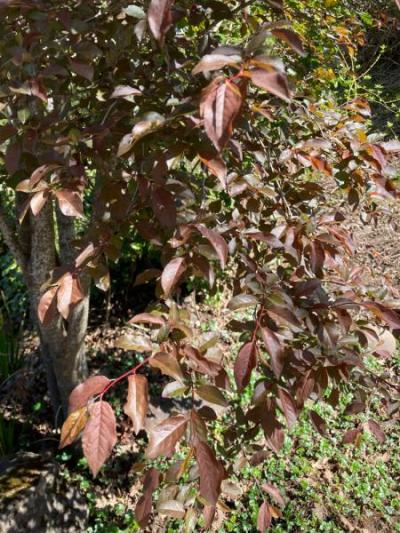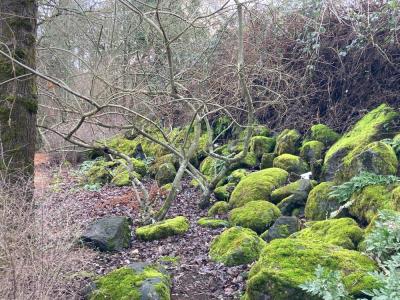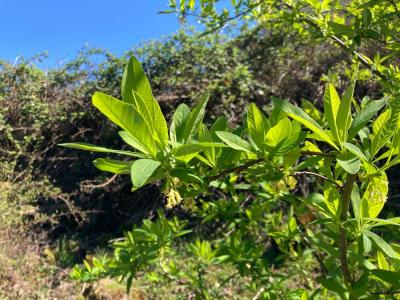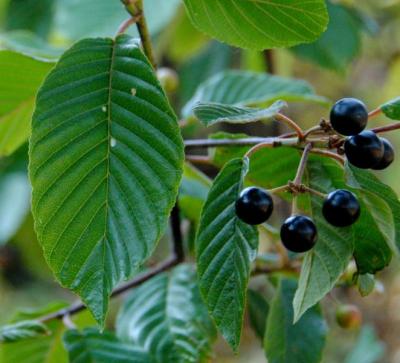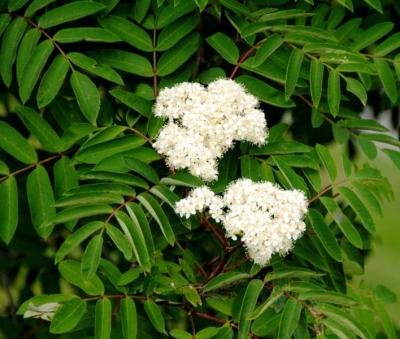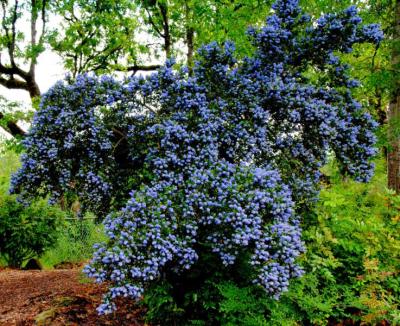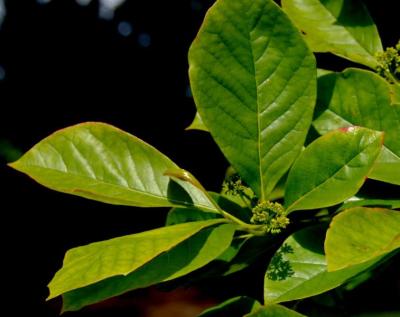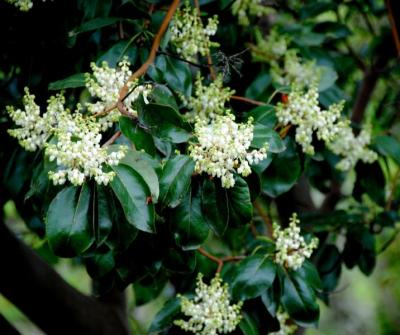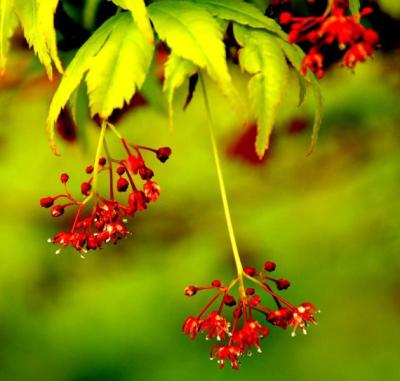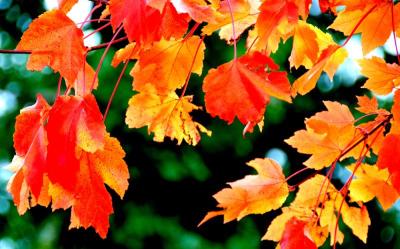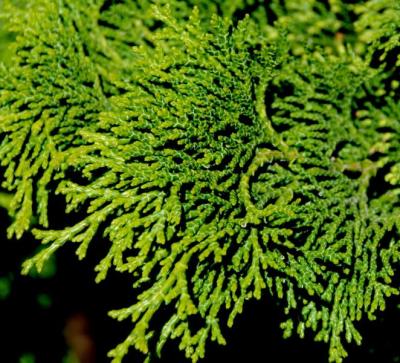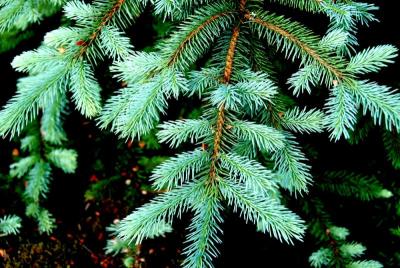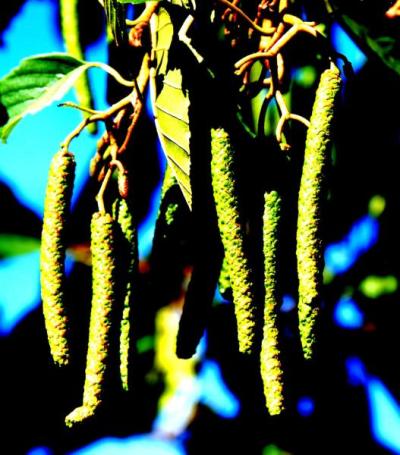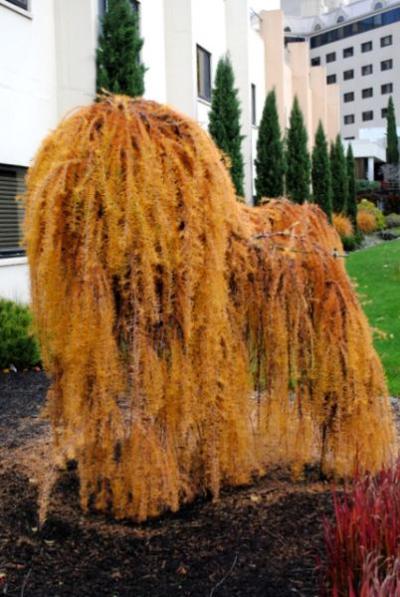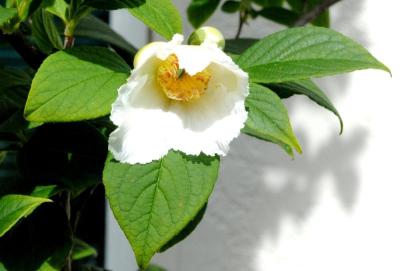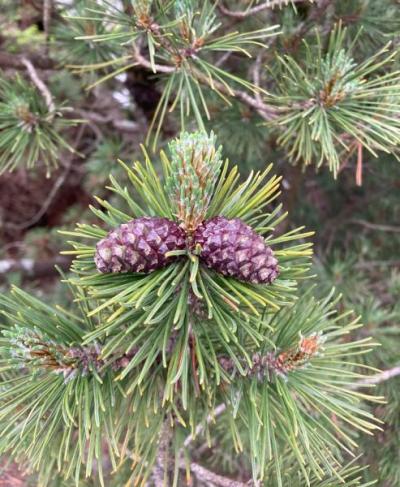
|
Mugo Pine (Pinus mugo) Mugo Pines, sometimes called Stone Pines, are found in the high elevations of southern European mountains. They are very variable in nature and due to nurserymen who sell seedling varieties, there is no accepted defined shape. Some grow into small trees, often multi-stemmed, while others, through pruning, stay shrubby. The modern nursery industry has developed clones of dwarf and miniature seedlings which has mostly solved this problem. Useful in small spaces and a favorite for use as Bonsai trees. |
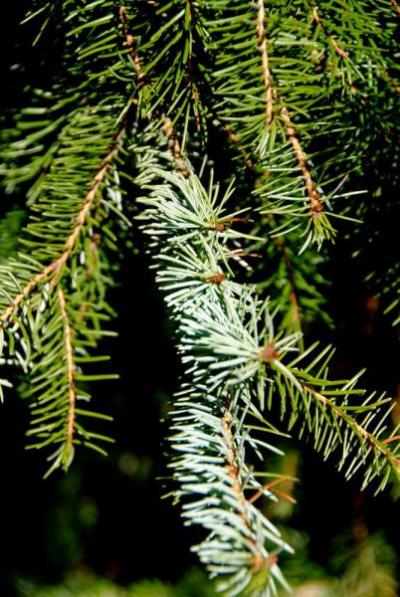
|
Weeping Serbian Spruce (Picea omorika) Serbian spruce have only been in cultivation since 1875. They were discovered high in the west Serbian and eastern Bosnian mountains as a small remnant population. It soon became popular in Europe. Picea omorika has many dwarf and miniature varieties. Here we have a weeping tree, the Bruns Weeping Serbian Spruce, Picea omorika ‘Pendula’, with sharply descending branches to easily slough off alpine snow. Highly suitable for the confined area around the pond. |
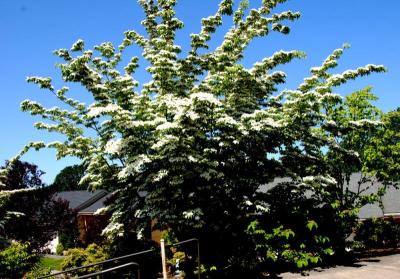
|
Kousa Dogwood (Cornus kousa) This dogwood tree is native to East Asia and has been called Chinese dogwood, Korean dogwood, and Japanese dogwood. A mature tree reaches 30 feet in height. Kousa is the Japanese word for dogwood. The red berries are edible, similar in taste to a persimmon, but not recommended to eat. Birds love them. The attractive star-shaped white blooms are actually showy bracts (foliage) surrounding tiny yellow true flowers. The Kousa blooms several weeks after the native pink dogwood trees (Cornus florida) seen elsewhere on our campus. Go back, turn right to cross bridge |
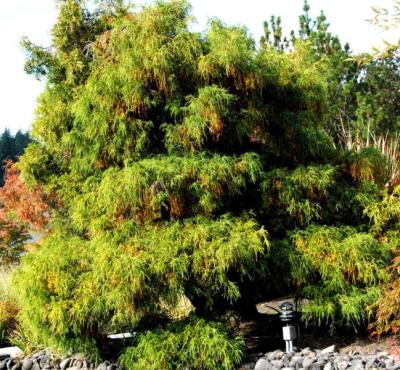
|
Sawara Cypress (Chamaecyparis pisifera) This member of the Cupressaceae family, native to Japan, is closely related to the Hinoki Cypress, Chamaecypraris obtusa. Both are used in Japan to build temples and shrines. Its wood is light colored, straight grained and rot resistant. It is also known as the thread leaf tree, sometimes the golden thread leaf, for its string like foliage which bear some resemblance to miniature dreadlocks. The Latin name pisifera (pea-bearing) refers to its small round green cones. Pisifera varieties are very variable and divided into three main groups. The thread leaf group (filifera); the soft ferny foliage group (plumosa); and the group that retains juvenile foliage (squarosa). Our specimen is a pale golden thread leaf filifera plant. |
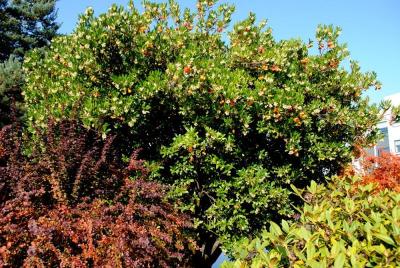
|
Strawberry Tree (Arbutus unedo) The Strawberry Tree is an evergreen shrub or small tree, 13 to 23 feet tall, native to the Mediterranean basin and Westerm Europe. It is the national tree of Italy because of the green leaves, its white flowers and its red berries that recall the Italian flag. The red, edible, strawberry-like fruit matures in autumn about the time that next year’s urn-shaped, white flowers are produced. |
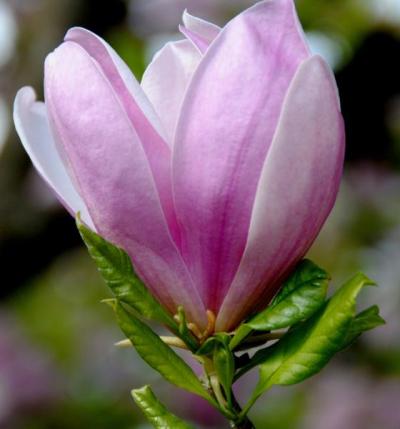
|
Saucer Magnolia (Magnolia soulangeana) The Saucer Magnolia is a multi stemmed deciduous large shrub or small tree. It’s a hybrid developed in France and the most widely planted magnolia, especially on the east and west coasts of the United States. It is noted for its large, various colored flowers of shades of white, pink and maroon which emerge in early spring before the leaves. |
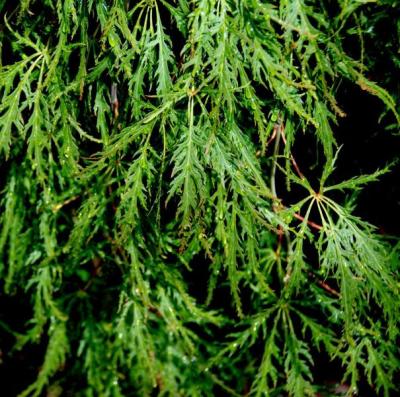
|
Japanese Maple (Acer palmatum var. Viridus) This plant, Acer palmatum ‘Viridis’ is a green example of the more commonly cultivated red dissected plant seen all around our campus. Acer palmatum is genetically overwhelmingly variable. Originating in the mixed forests of Japan and China, this weeping green laceleaf example illustrates that natural diversity. Here at Willamette View we have many examples of red, green and variegated, many with differing leaf configurations. In stature they come as small trees to prostrate mounds. Look left, then turn right |
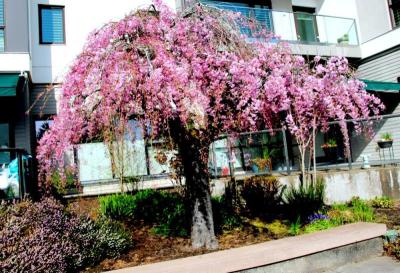
|
Weeping Flowering Cherry (Prunus subhirtella) The Weeping Higan Cherry, Prunus subhirtella ‘Pendula’, is valued both for its flowers and its shape. It flowers at least a month before the famed displays associated with Japan, Washington DC, downtown Portland and elsewhere on the campus. This naturally spreading form is grafted at head height to accentuate its weeping nature. There are four more of these trees in front of the Manor. Its ebony berries are not edible. |
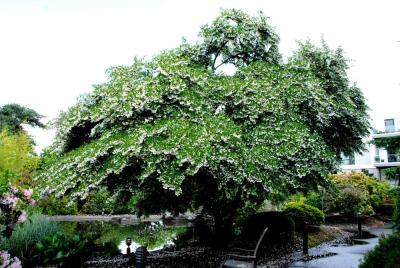
|
Japanese Snowbell (Styrax japonicus) Also referred to as Japanese Snowdrop, this tree, native to East Asia, has hanging bell shaped flowers best seen from below. The horizontal branches feature many white flowers in early spring. There is another Snowbell just south of the east entrance to the Court, and a large one in the middle of the Court lawn. |
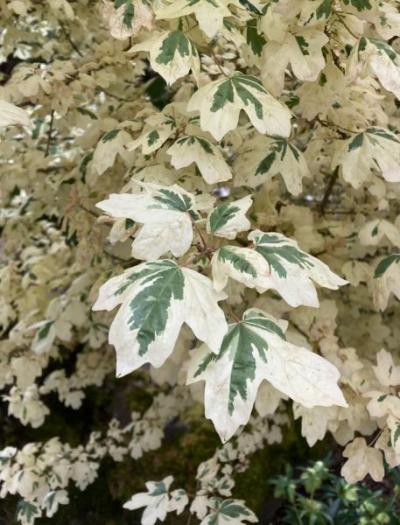
|
Variegated Field Maple (Acer campestre) The green and white variegated leaves of this field maple make it stand out among other maple trees. This extraordinary cultivar ‘Carnival’ was found among a batch of seedlings by a nurseryman in the Netherlands in 1989. Field maples are the only maples native to the UK, but they can be found throughout Europe and North Africa. These relatively small trees may live up to 400 years and thrive in the understory of European forests fulfilling much the same function as vine maples do in North America. As with many variegated plants, care must be taken to remove shoots that revert to the common green foliage. |
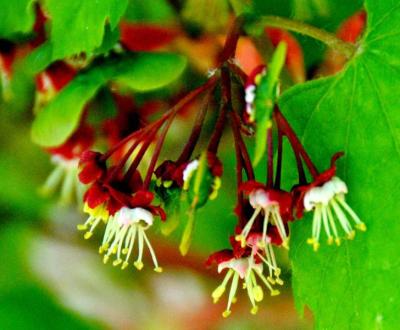
|
Vine Maple (Acer circinatum) This species of maple is native to the northwestern part of the US. As an understory plant in forest shade, it sprawls and spreads like a twisting vine, taking on unusual shapes. It is a broadleaf deciduous tree. The circular leaves with many lobes change from red in spring to green in summer to red and gold in the fall. It is easily misidentified as a Japanese maple. |
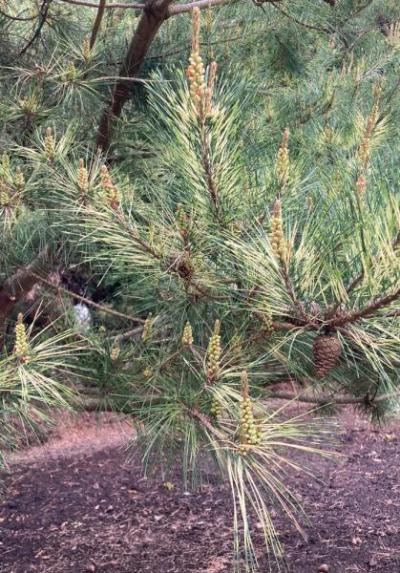
|
Japanese Red Pine (Pinus densiflora) Identified by Fred Rauch as a Burk’s Red Variegated cultivar, this red pine has a unique contorted shape with glossy green and yellow needles. Densiflora refers to the large number of pine cones it produces. Hugh Ferrar believes this variegated specimen of a common timber tree in NE China and Japan is probably Pinus densiflora ‘Oculis Draconis’. It is not very common in American domestic gardens because of its size, but miniature or dwarf varieties are now becoming available. In Japan and China, Pinus densiflora is used extensively in ornamental gardens where its informal shape has been manipulated and pruned extensively. The ephemeral male pollen-cones are densely clustered at the bottom of each year’s new growth, thus giving it its name. |
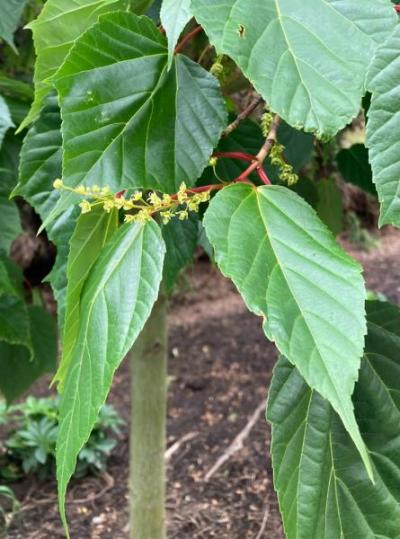
|
Striped Maple (Acer pensylvanicum) Also known as moosewood, snakebark maple, whistlewood, or goosefoot maple (because of its broad three-pronged leaves), this tree has twisting vertical white stripes on its bark and boasts bright yellow leaves in fall. it prefers partial shade. This tree is principally dioecious which means each tree bears only male or female characteristics preventing self pollination. Other examples of dioecious trees are Ginkgos and Holly trees. Our specimen of unknown origin has variegated leaves on young foliage. Time will tell if this is a permanent characteristic. |
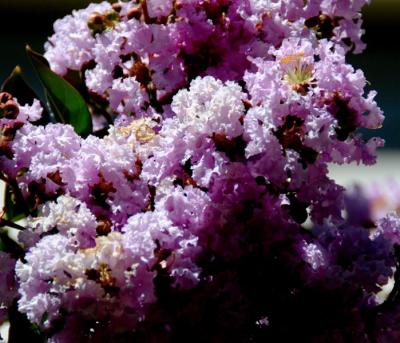
|
Crape Myrtle (Lagerstroemia indica) Crape Myrtle is a deciduous, multi-stemmed large shrub or small tree to 40 feet high native to Asia. The bark is a prominent feature, being smooth, pinkish-gray and mottled, shedding each year. Many cultivars have been developed providing flower colors in white, pink, mauve, purple or carmine, lasting through the summer months. |
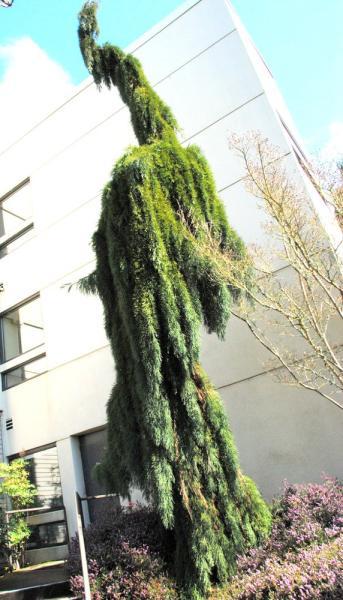
|
Weeping Giant Sequoia (Sequoiadendrum giganteum) Giant Sequoias are one of the largest organisms in the world. They can live 3,500 years or more, but today only remnant native populations exist on the western slopes of the Sierra Nevada mountains. However it has been successfully grown in urban landscapes for two hundred years. Our weeping variety, Sequoiadendron giganteum ‘Pendulum’, originated as a seedling in France in 1863 and is still a puppy. It has never existed in the wild. Its strictly weeping characteristics along with the wayward behavior of its leader and branches give it a Dr Seuss appearance which endears it to the modern gardener. Unfortunately this erratic growth habit leads to weaknesses and is often damaged in extreme weather. There are many examples around the campus. Head towards Gym entrance |
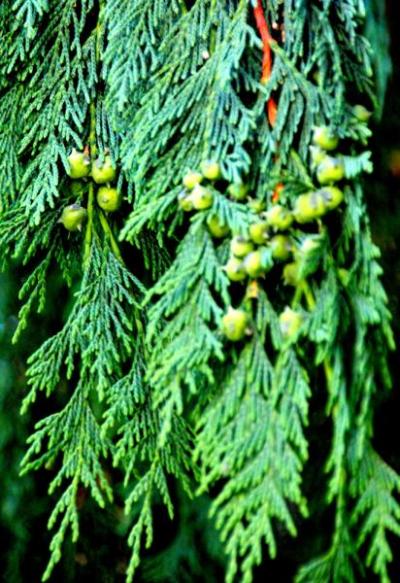
|
Nootka Cedar (Callitropsis nootkatensis) Also called Nootka Cypress, this evergreen tree is native to the coastal regions of the Pacific Northwest. The name Nootka refers to where it was discovered, on the lands of the Nootka First Nation people who lived on Vancouver Island in British Columbia. It can grow taller than 100 feet and older than 1000 years. Its genus over the years has been changed from Cupressus to Chamaecyparis to Xanthocyparis, and finally in 2021 to Callitropsis. Taxonomists are alive and kicking. |
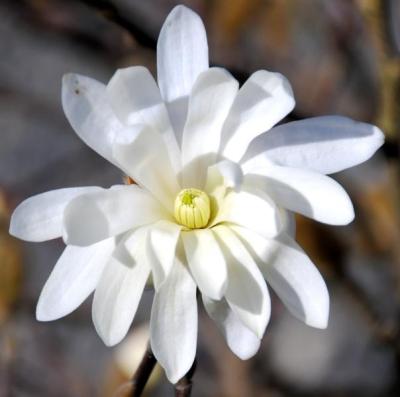
|
Star Magnolia (Magnolia stellate) Star Magnolia is a slow-growing, deciduous shrub or small tree (to 10 feet) from Japan. Its showy white or pink, star-shaped flowers are produced in the spring before its leaves open. The new leaves have a bronze-green tint and turn yellow in fall before dropping. |
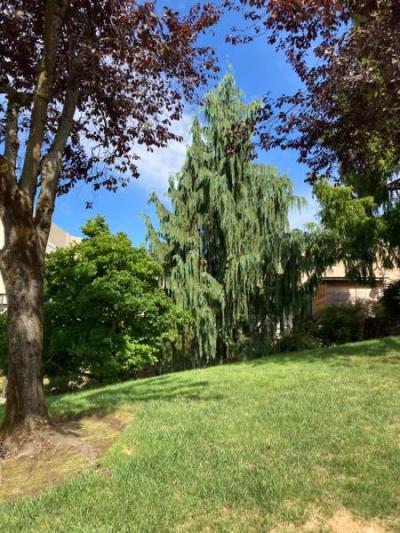
|
Weeping Nootka (Callitropsis nootkatensis) To distinguish this evergreen from the nearby Nootka Cedar, it's best to add 'Pendula' to its name, because it is more weeping in shape. Other names include Alaska Cedar and Alaska Yellow Cedar. The bark is scaly and breaks off into flakes. Its cones are rounder than those of other cedars. |
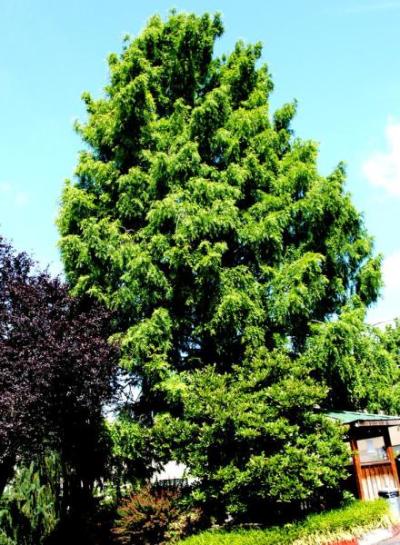
|
Dawn Redwood (Metasequoia glyptostroboides) Look up at the top of the slope to see the magnificent Dawn redwood. It is a small cousin of the coastal redwood and giant sequoia trees found in CA. Just like larch trees, it is deciduous and loses its needles every winter. It is considered a living fossil. Dawn redwoods thrived for millions of years all over the northern hemisphere, including central Oregon. Evidence in the John Day Fossil Beds show they vanished about five million years ago. Scientists thought it was extinct until a grove of Dawn Redwoods was found in China in 1943. They were reintroduced into cultivation very successfully and today thrive with many different variations of color and size. Our plant is a seedling forest tree planted around the time the Terrace was built, probably in the late 1970s or early 1980s. |

